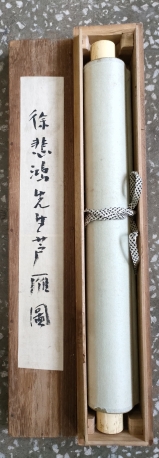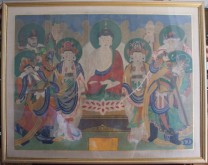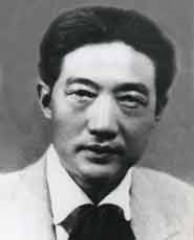芦雁
(平台服务时间:周一到周五 9:00-17:00)
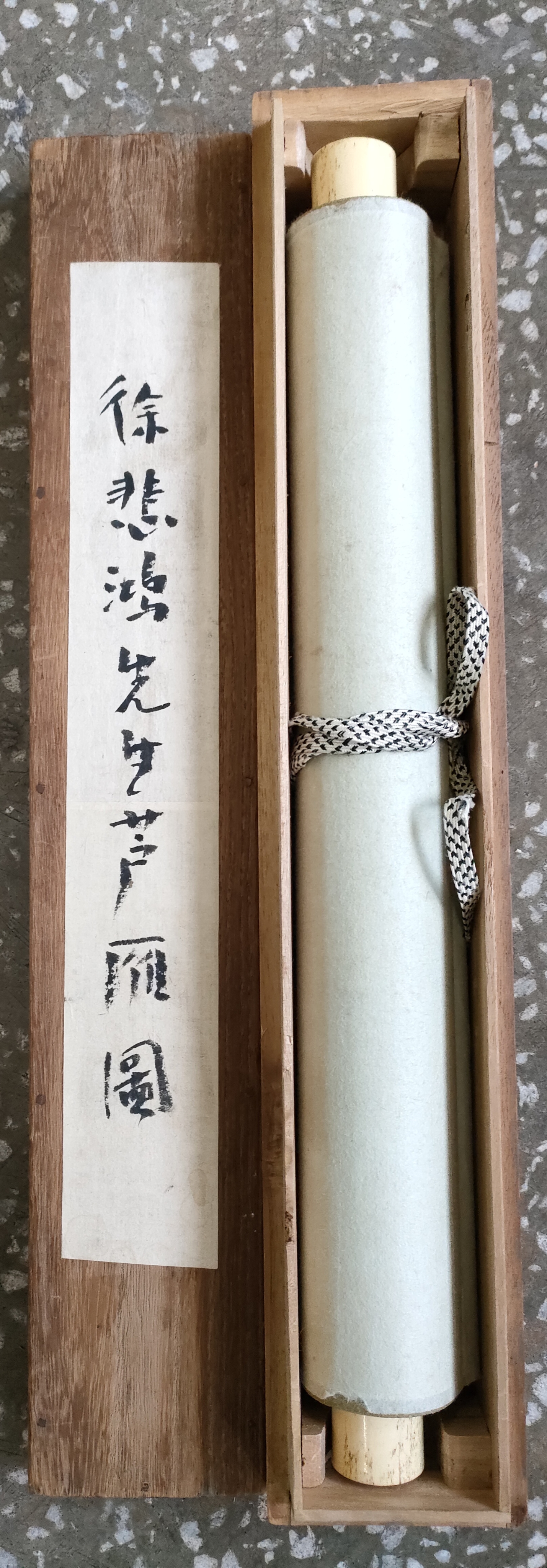
- 资质:
- 评分:
1分 2分 3分 4分 5分 6分 7分 8分 9分 10分 0分
- 印象:
- 经营时间:17年
- 展厅面积:20平米
- 地 区:黑龙江-哈尔滨
| 尺寸 | 31x81(cm) | 创作年代 | 不详 | ||
|---|---|---|---|---|---|
| 作品分类 | 国画 | 形制 | 立轴 | 技法 | 水墨 |
| 材质 | 绢本 | 题材 | 花鸟 | ||
| 作品标签 | |||||
| 适用空间 | |||||
作者介绍
徐悲鸿(1895年-1953年),我国艺术巨匠,同时也是杰出的美术教育家。在20世纪上半叶中国艺术进入现代之时,徐悲鸿无疑是艺术界举足轻重的人物,为了扭转中国画抄袭、模仿、缺乏生活气息的萎靡颓风而大声疾呼,他学贯中西,将西方精湛的写实技巧融汇到中国绘画之中,为传统艺术的革新与发展开拓了新的广阔天地。由于他在绘画理论和实践上的卓越成就以及他在美术教育方面所做的巨大贡献,他被国际评论誉为“中国近代绘画之父”。
1895年,徐悲鸿出生在以“盛产”文人、才子著称的江苏省宜兴县屺亭桥镇。其父徐达章是当地知名画家,他精通诗文、书法、篆刻,尤擅绘画。徐悲鸿自幼随父习诗、书、画、印,打下了深厚的传统文化基础。17岁的徐悲鸿已是宜兴知名的画家,在宜兴女子师范学校、彭城中学、始齐小学三校任图画教师。
1916年,徐悲鸿入上海震旦大学法文系半工半读,课余苦修素描。暑期应聘到明智大学作画,结识了著名学者康有为、王国维等人。翌年5月,徐悲鸿拿到了明智大学的一笔稿费,赴日本学习美术,年底回国。这年12月,徐悲鸿北上,被北京大学聘为画法研究会导师,受新文化运动影响,接受民主与科学思想,成为新文化运动在美术方面的主要代表之一。当时他就明确提出“古法之佳者守之,垂绝者继之,不佳者改之,未足者增之,西方画之可采入者融之”。
1919年3月,徐悲鸿怀着向西方学习科学和民主、以复兴中国美术为己任的决心,从上海乘船赴法国留学。徐悲鸿到达巴黎,随后考入国立巴黎高等美术学校,以弗拉孟、高尔蒙为师。1920年冬,经法国大雕塑家唐泼特介绍,徐悲鸿拜C·柯罗的学生、法国国家画会领袖达仰为师。1921年夏,赴德国访问柏林美术学院,并先后去英国、比利时、瑞士、意大利等国,参观各大博物馆、美术馆和美术遗址,悉心观摩和研究历代艺术杰作,并临摹E.德拉克洛瓦、P.-P.普吕东、伦勃朗等大师的作品。历经8年苦读,通过对欧洲艺术如饥似渴的吮吸,取得了卓越的艺术造诣。
1927年春归国后,徐悲鸿奋力投身美术创作和美术教育工作当中,受田汉之邀,出任上海南国艺术学院美术系主任,同时受聘为中央大学艺术系教授,在教学与创作中,提倡写实主义,抨击形式主义。1929年9月,由蔡元培推荐,受聘担任北京大学艺术学院院长,提倡中国画的革新,反对保守主义,曾亲自拜访并聘请画家齐白石出任该院教授。1930年完成油画《田横五百士》,翌年完成中国画《九方皋》,1933年完成油画《徯我后》,开中国历史画一代新风。
^_^
Xu Beihong (1895-1953) is a master of arts and an outstanding educator of fine arts in China. At the first half of the 20th century when China’s arts entered into its modern stage, Xu Beihong was undoubtedly a great figure in the arts field. To change the situation of plagiarization and imitation, and listless style for lack of life experience in Chinese painting then, he was the first to integrate the exquisite realistic practice of western paintings to Chinese paintings, following good command of both of them, exploring a new and wide horizon for the revolution and development of traditional arts. Thanks to his outstanding achievements in the theory and practice of paintings, and huge contribution in the education of fine arts, he was once honored “Father of Paintings in Contemporary China” by the international community.
In 1895, Xu Beihong was born at Qitingqiao Township, Yixing County, Jiangsu Province famous for its large productivity of literary figures and gifted scholars. His father Xu Dazhang was a well-known local artist and good at poems, calligraphy, seal cutting and especially painting. Since his childhood, Xu Beihong followed his father to study poems, calligraphy, painting, and seal cutting, which laid a solid foundation of traditional culture. At the age of 17, Xu Beihong had been a well-known artist in Yixing, and delivered courses of drawing at Yixing Girls Teachers’ School, Pengcheng Middle School and Shiqi Primary School.
In 1916, Xu Beihong was engaged in a work-study program in the Department of French of Shanghai Zhendan University and worked hard on sketch in his spare time. In the summer vacations, he was employed by Mingzhi University to make paintings when he got to know Kang Youwei, Wang Guowei and other well-known scholars. On May the next year, Xu Beihong got his remuneration from Mingzhi University and went to Japan to study fine arts, and returned back at the end of the same year, when on December, he moved northward and was engaged by Peking University as a tutor of arts institute. Later, influenced by the New Culture Movement, he accepted the ideals of democracy and science, and became one of the main representatives of fine arts in the movement. At that time, he explicitly proposed to “maintain those good practices in ancient Chinese paintings, inherit those valuable practices, revise those bad practices, perfect those deficient practices and integrate those available practices in western paintings.”
On Mar 1919, Xu Beihong boarded a ship from Shanghai to France with a determination in his mind to study science and democracy of the west, and reinvigorate China’s fine arts. Following his arrival at Paris, Xu Beihong was enrolled by National Paris Fine Arts College and followed Flameng and Golmeng. In the winter of 1920, with the recommendation of Don Porter, a great sculptor of France, Xu Beihong became a student of Dagnan, who was a student of C· Corot, and a leader of France National Institute of Paintings. In the summer of 1921, he moved to Germany to visit Berlin Academy of Fine Arts, and then looked around various major museums, art galleries and fine arts relics of the United Kingdom, Belgium, Switzerland, Italy and other countries, meticulously viewing and researching great arts works in the past and emulating works of such masters as E. Delacroix, P.-P. Prud’hon and Rembrandt. Following hard work and eager absorption on European arts for eight years, he finally made outstanding attainments in arts.
In the spring of 1927, Xu Beihong returned back motherland and tried to be involved in fine arts innovation and education. Soon, he acted as the Dean of the Department of Fine arts of Shanghai Nanguo Fine Arts College at the invitation of Tian Han, and was employed as a professor with the Department of Arts of Central University. In his teaching and innovation, he promoted realism and criticized formalism. On September 1929, recommended by Cai Yuanpei, he acted as the Dean of Arts College of Peking University, and promoted innovations on traditional Chinese painting, and opposed conservatism. He once paid a visit to artist Qi Baishi in person and invited him to act as a professor with the college. In 1930, he accomplished his oil painting work 500 Soldiers Crossing the Field, and Chinese painting Jiufanggao. In 1933, he accomplished his another oil painting work Waiting for Me, marking a new style in Chinese history paintings.

 黄琦
黄琦 贾平西
贾平西 测试用艺术
测试用艺术 庞明璇
庞明璇 未知
未知 张大千
张大千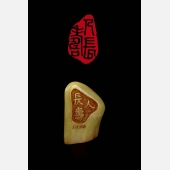 陈维廉
陈维廉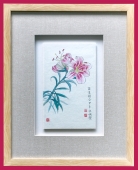 赵映璧
赵映璧